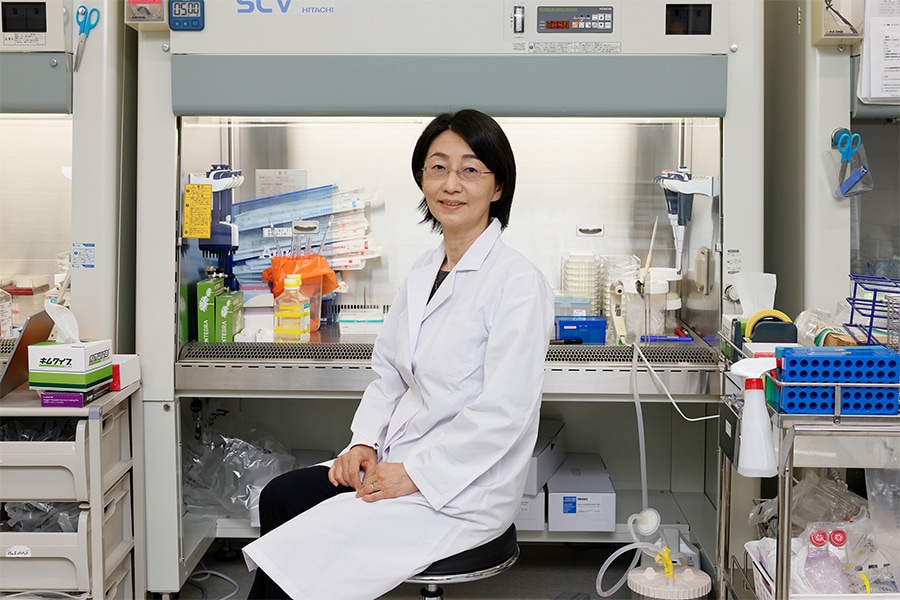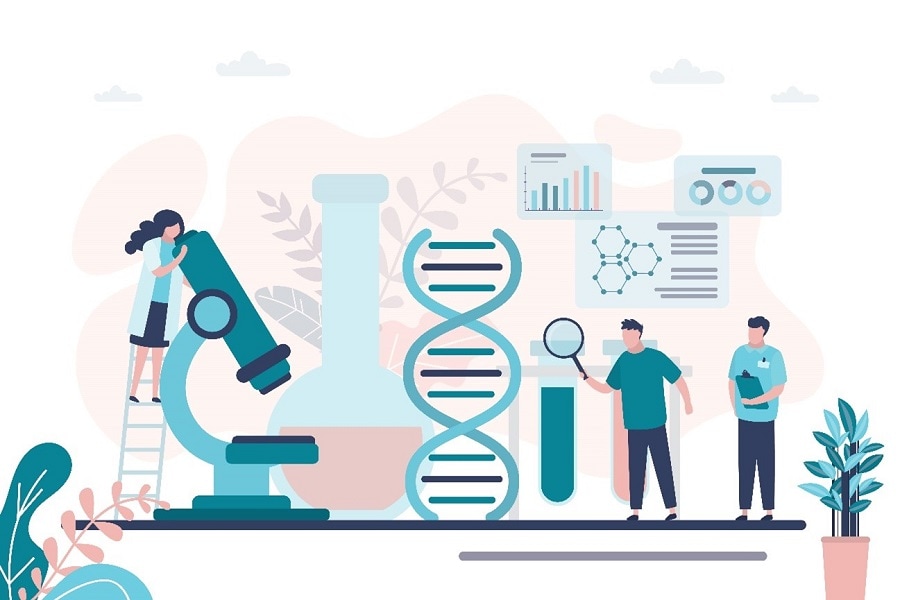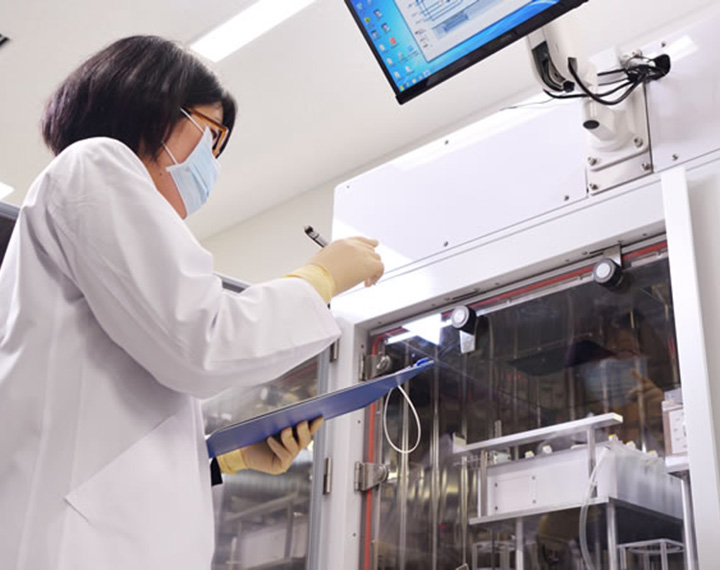What Are “Designed Cells” and Why Are They Attracting Attention?
Aug. 4, 2023
Atsumi Takebayashi

Hope always exists for better treatments for people suffering from cancer or other intractable diseases. In the spotlight as a therapy that might be able to realize these hopes is gene and cell therapy. This treatment involves cells specially designed to have functional enhancements and then introducing them into the bodies of patients. If this can be realized, it is expected to help in the treatment of intractable diseases.
Cells used in such treatments are called "designed cells," and Hitachi is pursuing research into more efficiently creating highly functional designed cells with a view toward providing support to pharmaceutical companies and others. How are designed cells created and what kinds of changes will they bring about in future medicine? This is an interview with Shizu Takeda, corporate chief scientist of the Research & Development Group and who leads designed cells research at Hitachi, Ltd.
Designed cells with special added functionality
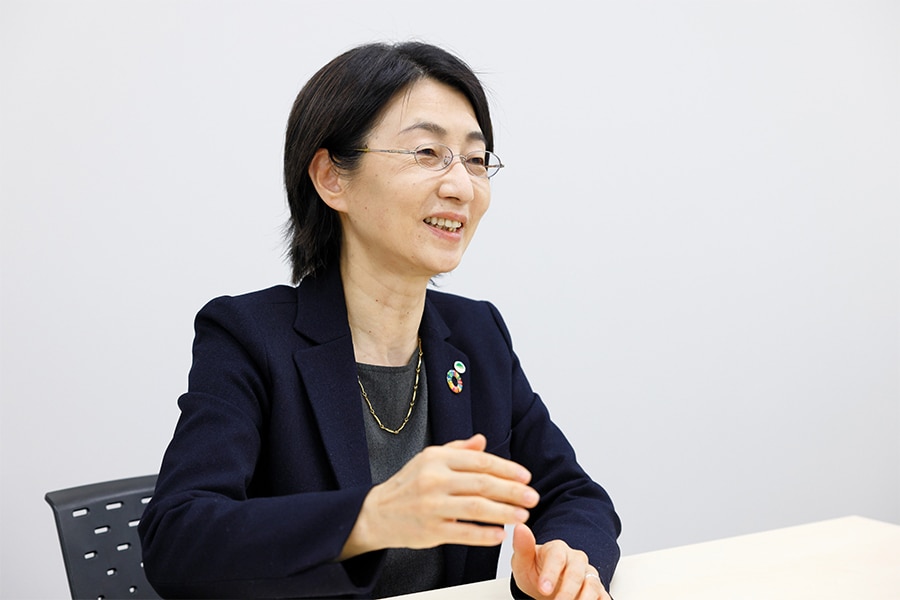
-- This is the first time I have heard of a "designed cell.”
Takeda: Regenerative medicine, which utilizes iPS cells, or induced pluripotent stem cells, is known as a cutting-edge medical treatment. Along with this, therapies that use gene modification, that is, designed cells, are also raising expectations as an innovative treatment.
Designed cells are cells for which genes have been altered to add special functionality as a way to perform highly efficient treatments. Cells designed for target diseases and treatment goals are manufactured by pharmaceutical companies as pharmaceutical cell products, which are then used by physicians in their treatments.
-- How are designed cells created?
Takeda: Immune cells, which are cells that keep the body in a healthy state by attacking bacteria, viruses, cancer cells, and other foreign substances, are taken from the patient and used to make designed cells. Specifically, modifications are made to the genes of these cells, strengthening functionality, and after they are reintroduced into the body, causing them to specifically attack disease-inducing cells.
One of the advantages of designed cells is that the risk of damage to other normal cells is controlled because they specifically attack only harmful cells. In addition, because therapeutical effects can be expected through intravenous administration, they also reduce the treatment burden of patients.
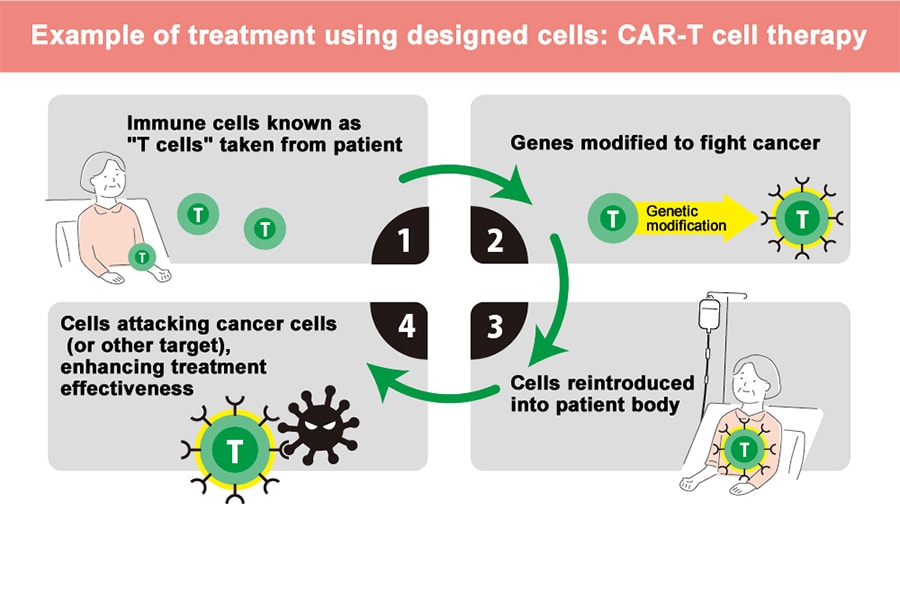
-- It has been reported recently that designed cells have been used to treat cancer.
Takeda: Cancer treatments include surgery, radiation therapy, chemotherapy with anticancer drugs, and immunotherapy. Among these, a type of immunotherapy shown to be highly effective is one that uses cells called "CAR-T cells."
CAR-T cells are created by taking immune cells called "T cells" from the patient and genetically modifying them to add chimeric antigen receptors (CAR) for finding cancer cell markers and to increase their ability to attack cancer cells. Treatment is effected by returning them to the patient's body after they are made to specifically target cancer cells.
These CAR-T cells are an example of designed cell therapy as a treatment method that replaces drugs with cells to cure specific diseases. To support the pharmaceutical cell product development activities of pharmaceutical companies and other organizations, Hitachi is conducting research on genetic modification aimed at increasing the aggressiveness of immune cells.
Why is Hitachi working on designed cells?
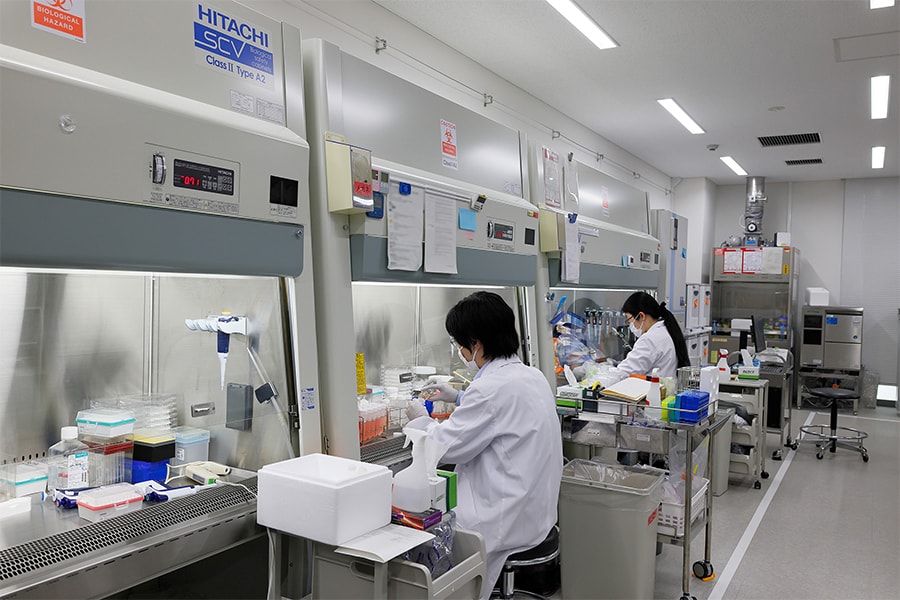
-- Why did Hitachi become involved in working on designed cells?
Takeda: Up to now, Hitachi has worked constantly on cutting-edge projects such as proteome analysis and genome analysis, and in recent years, it has continued research in the field of regenerative medicine. In 2017, Hitachi established its Hitachi Kobe Laboratory—where I am director—and also succeeded in the social implementation of an automated iPS cell culture system.
Based on the expertise that we developed during these regenerative medicine research activities, from 2022 we expanded our areas of research to include the field of gene and cell therapy and began work on designed cells.
These moves accelerated against the backdrop of Hitachi's declaration to focus on research & development targeting cancer and other difficult-to-cure diseases from the perspective of "backcasting," which is an approach by which future conditions are envisioned, and then, after working backward from there, measures are considered that should be taken now.。
As a specific milestone for achieving this, we are aiming to complete a designed cell development platform during FY2024.
-- What is a designed cell development platform?
Takeda: Designed cell development requires time and money. This platform is a solution to this issue, and so it increases efficiency. By reducing the cost and development time of designed cell development, and by making use of such expertise as automated iPS cell culture technology developed at Hitachi Kobe Laboratory, we will be able to produce designed cells at less cost and more quickly.
We are also utilizing digital technology. Specifically, we are combining information from papers and literature on DNA sequences and proteins with large amounts of data acquired from original Hitachi experiments, and we are then using machine learning to analyze correlations between DNA sequences and cell functions. Based on these analysis results, we are designing safe and highly functional designed cells.
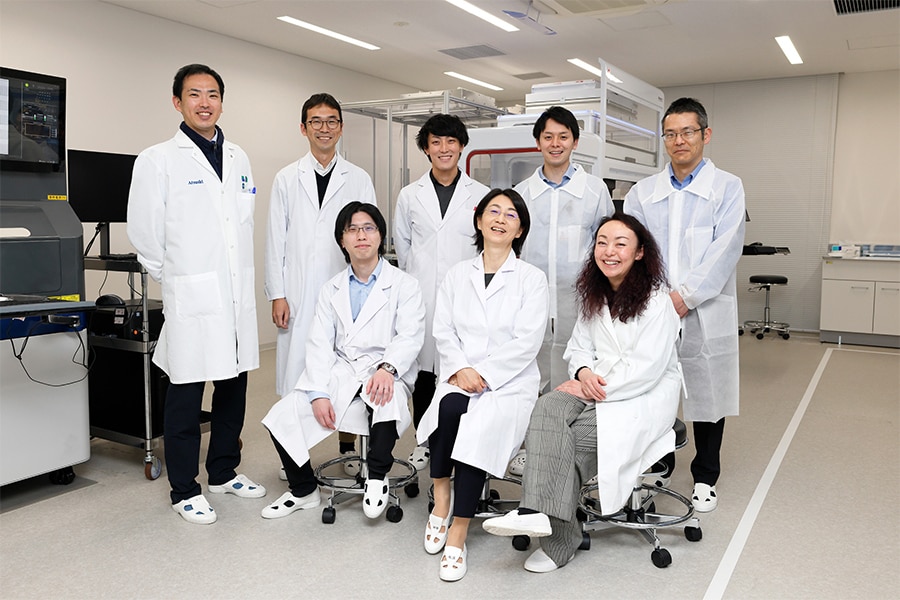
-- Do you have any issues in conducting research?
Takeda: One issue that we have is the application of designed cells to solid tumors. Currently, our main treatment target is blood cancer, but many researchers around the world are researching solid tumors and have started clinical testing. Solid tumors are, of course, also one of our focuses.
Another issue is finding the right people. We need to create teams comprising researchers and engineers having various backgrounds and expertise, and so we are making efforts to recruit people with experience.
A future created by designed cells
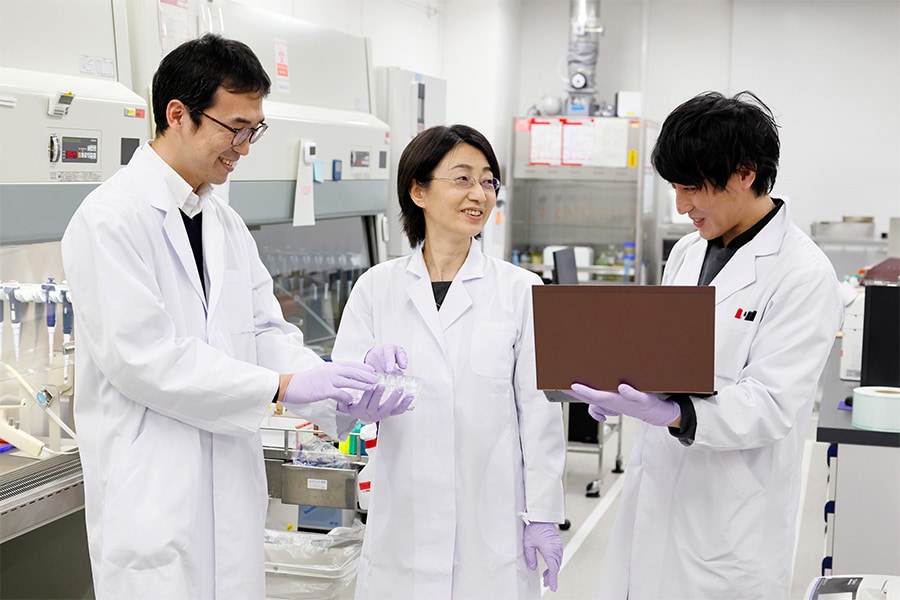
-- How do you envision a future vision that is realized by designed cells?
Takeda: One example of a future vision that I envisage is one in which cancer treatments using designed cells will be readily available even at local clinics. Equipping clinics with compact devices that automatically produce designed cells will make it possible for anyone to easily receive designed-cell-based treatment.
Designed-cell-based treatment is mainly done intravenously. This allows patients to be treated without making any big changes to their daily life. This should also benefit well-being, a state of harmony between the physical, emotional, and society.
Designed cells may also prove useful in cancer prevention. Administered designed cells will continue to live and circulate throughout the body. If during this time they find new cancer cells, they can immediately eliminate them. Though this will require a little more time, we expect it to come about in the future.
-- Do designed cells have other uses besides disease treatment?
Takeda: Designed cells also have potential for use in anti-aging. The mechanism of aging has come to light in recent years. In essence, it is the diverse types of damage caused by aged cells.
So, if we can make designed cells that recognize only aged cells, we may be able to contribute to anti-aging. With these and other possibilities in mind, I hope to put designed cells to use in solutions for various problems.
